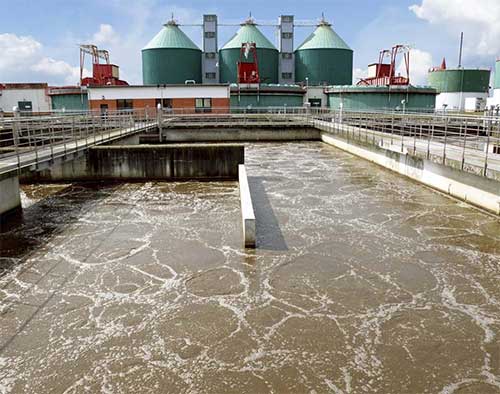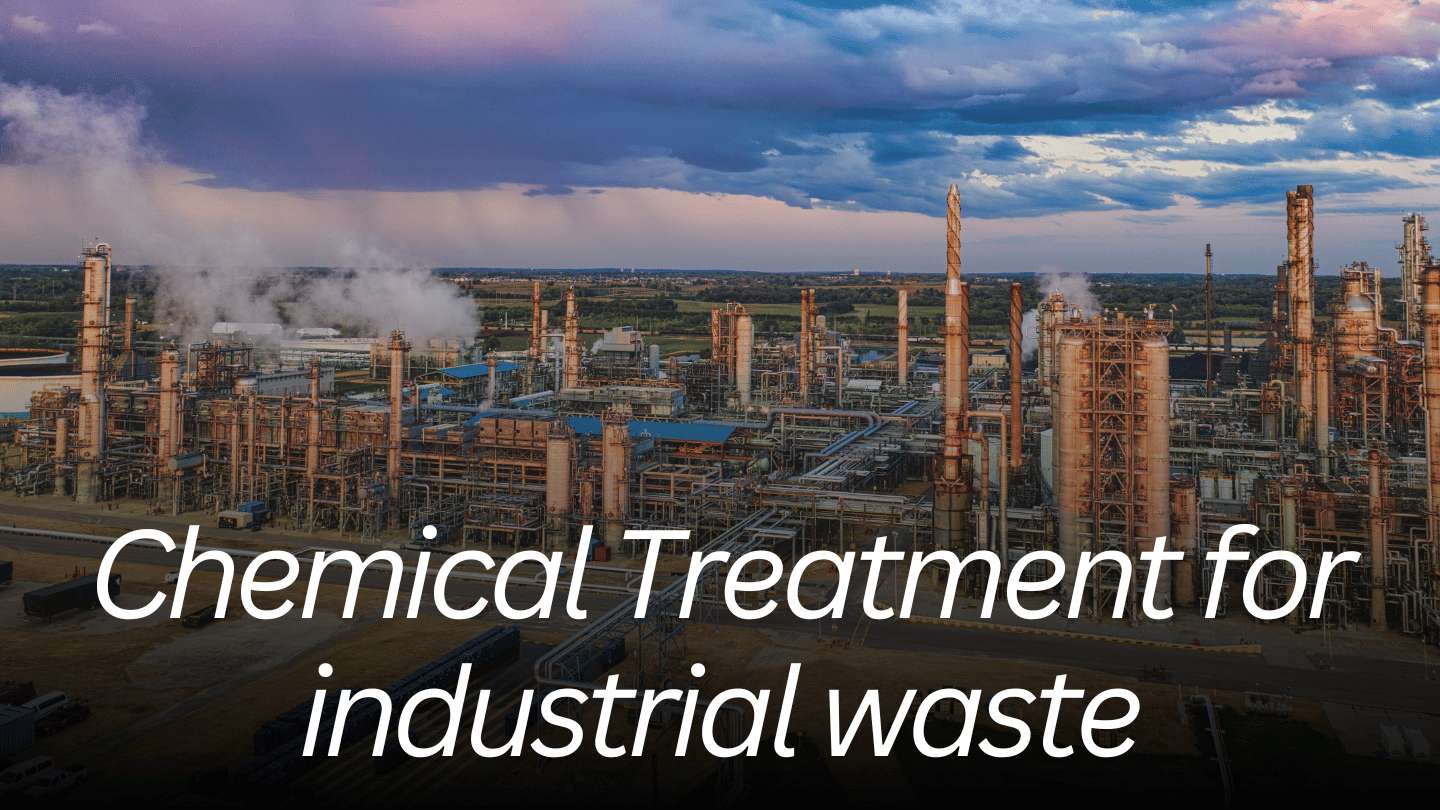Industrial Waste Water Treatment-- Eco-Friendly Solutions for Water Recycling
Industrial Waste Water Treatment-- Eco-Friendly Solutions for Water Recycling
Blog Article
Advancements and Advancements in Hazardous Waste Water Treatment Technologies
The landscape of industrial wastewater therapy is going through a transformative change, driven by advancements that enhance both effectiveness and sustainability. Emerging innovations, such as membrane bioreactors and microbial gas cells, are redefining contaminant elimination procedures while adding to energy generation. Resource recuperation methods are acquiring grip, straightening with round economic situation principles. As regulatory criteria progress, the assimilation of AI and artificial intelligence right into wastewater monitoring systems promises to ensure and improve procedures compliance. The complete ramifications of these developments increase crucial questions regarding their scalability and lasting impact on market techniques.
Introduction of Waste Water Therapy Technologies
Wastewater treatment innovations incorporate a range of methods designed to eliminate impurities from commercial effluents before their release into the environment. These technologies are vital for maintaining environmental balance and guaranteeing conformity with ecological guidelines. The primary classifications of wastewater therapy include physical, chemical, and biological approaches, each serving distinct objectives based on the nature of the contaminants existing.

Biological treatment techniques use microorganisms to deteriorate natural issue, making them particularly effective for organic-rich effluents. Methods like triggered sludge and biofilm activators harness the all-natural degradation capabilities of germs, bring about significant reductions in biochemical oxygen demand (BODY)
Advanced Purification Techniques
Advanced filtration methods represent an essential advancement in the realm of industrial wastewater therapy, boosting the performance of impurity elimination procedures. Industrial Waste Water Treatment. These techniques include a series of innovations, consisting of microfiltration, ultrafiltration, nanofiltration, and reverse osmosis, which offer sequential barriers for various particle dimensions and chemical frameworks
Microfiltration and ultrafiltration make use of membrane layer systems to eliminate suspended solids, bacteria, and bigger natural particles, enhancing the quality of effluent before more therapy. Nanofiltration connects the space between ultrafiltration and turn around osmosis, properly eliminating divalent ions and organic compounds, therefore decreasing the load on downstream procedures.
Reverse osmosis uses the greatest level of filtration by enabling only water and tiny particles to travel through its semi-permeable membranes, making it optimal for recovering top quality water from industrial effluents. Recent developments in membrane modern technology, consisting of the advancement of more sturdy and fouling-resistant materials, have actually considerably improved functional effectiveness and reduced prices.
Integrating these innovative filtering techniques not just enhances the general treatment procedure but likewise contributes to sustainability initiatives by making it possible for water reuse and source healing in commercial settings. (Industrial Waste Water Treatment)
Organic Treatment Advancements

In addition, the advancement of crafted organic systems, such as membrane bioreactors (MBRs), incorporates biological therapy with sophisticated membrane filtering. This integration enables higher effluent top quality and minimized footprint, making it ideal for space-constrained industrial centers. Developments in genetically crafted microorganisms have actually also arised, enhancing the biodegradation of certain contaminants, such as drugs and heavy steels, that are traditionally challenging to get rid of.
Furthermore, the execution of bioaugmentation techniques, where valuable microorganisms are presented to enhance the existing organic therapy processes, has revealed promising lead to boosting treatment performance. These technologies collectively symbolize a fad towards more lasting and efficient biological treatment methods that can adjust to the developing complexities of commercial wastewater streams. As sectors continue to prioritize ecological conformity, these organic innovations will play an important duty in wastewater monitoring.

Source Healing Approaches
In industrial settings, the integration of source healing techniques has actually ended up being progressively vital for boosting sustainability and decreasing waste. These methods concentrate on extracting valuable materials and power from wastewater streams, thus changing potential contaminants right into multiple-use resources.
One popular technique is nutrient recuperation, where nitrogen and phosphorus, commonly existing in excess in wastewater, are captured and converted right into fertilizers. This not just lowers environmental influences however likewise offers a round economic situation option for farming applications. In addition, modern technologies such as anaerobic food digestion allow for the conversion of natural waste right into biogas, a renewable resource resource that can balance out nonrenewable fuel source usage in industrial operations.
Furthermore, advanced purification and membrane layer technologies promote the recuperation of industrial by-products such as metals and salts. These recovered products can be reintegrated into production procedures, lowering the demand for virgin resources.
Future Trends in Drainage Management
As markets increasingly focus on sustainability, the future of wastewater administration is set to undertake considerable improvements. Technological improvements, such as artificial knowledge and equipment learning, will certainly make it possible for extra reliable monitoring and management of wastewater systems. These innovations can predict upkeep needs, optimize treatment procedures, and improve decision-making, inevitably lowering operational expenses and environmental influence.
Additionally, the assimilation of circular economic climate concepts will certainly play a crucial duty in wastewater administration. Industries are anticipated to move in the direction of systems that not just deal with wastewater but additionally recover useful resources, such as nutrients, water, and energy. internet This shift will decrease waste and promote the reuse of products, aligning with international sustainability objectives.
Arising treatment methods, such as membrane bioreactors and advanced oxidation procedures, will even more improve the effectiveness of wastewater treatment, permitting greater high quality effluents appropriate for reuse. Additionally, regulatory structures you could look here are likely to develop, emphasizing more stringent requirements for wastewater discharge and encouraging sectors to take on ingenious treatment solutions.
Verdict
In final thought, the evolution of commercial wastewater therapy innovations demonstrates a considerable change in the direction of boosted performance and sustainability (Industrial Waste Water Treatment). Advancements in sophisticated filtration techniques, biological treatments, and resource recovery approaches highlight the market's commitment to ecological stewardship.
The landscape of industrial wastewater therapy is undergoing a transformative change, driven by advancements that boost both effectiveness and sustainability.Wastewater therapy technologies incorporate a variety of approaches designed to eliminate pollutants from commercial effluents before their launch into the atmosphere.Utilizing the power of organic procedures has actually led to considerable advancements in the therapy of industrial wastewater.Furthermore, the execution of bioaugmentation approaches, where helpful germs are presented to enhance the existing organic treatment procedures, has revealed promising outcomes in boosting therapy performance. These innovations collectively indicate a trend towards even more efficient and lasting biological treatment methods that can adapt to the developing complexities of commercial wastewater streams.
Report this page